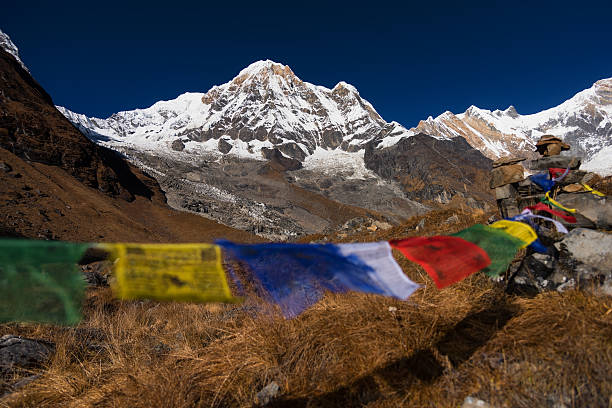March is one of the best times to embark on the epic journey to Everest Base Camp in the Khumbu region of Nepal. The weather is relatively stable, the skies are clear, and the views of the majestic Himalayas are breathtaking. This blog will provide you with a comprehensive guide to trekking to Everest Base Camp in March, covering everything from hiring a guide and porter to preparing for the trek and dealing with potential challenges along the way.
Guide & Porter:
Hiring a knowledgeable guide and a reliable porter is highly recommended for the Everest Base Camp trek. A guide can provide valuable insights into the local culture, history, and geography of the region, as well as ensure your safety on the trail. A porter can help lighten your load and make the trek more enjoyable. It’s essential to choose experienced and licensed guides and porters to make the most of your trekking experience.
Food and Accommodation:
During the Everest Base Camp trek, you will stay in teahouses along the trail. These teahouses provide basic accommodation and meals, including local dishes such as dal bhat (rice and lentils), momos (dumplings), and noodle soups. It’s essential to have a hearty breakfast and dinner to fuel your trekking adventures. Most teahouses also offer hot showers and charging facilities for electronic devices, albeit at an additional cost.
Lukla Flight:
The Everest Base Camp trek typically starts with a thrilling flight from Kathmandu to Lukla, a small mountain town that serves as the gateway to the Khumbu region. The flight offers stunning aerial views of the Himalayas but can be subject to weather conditions. It’s essential to be prepared for potential flight delays due to fog or high winds. In case of flight cancellations, helicopter options are available for an additional cost.
Weather Conditions and Temperatures:
In March, the weather in the Everest region is relatively stable, with clear skies and moderate temperatures during the day. However, temperatures can drop significantly at higher altitudes, especially at night. It’s essential to pack layers of clothing to stay warm and comfortable throughout the trek. Daytime temperatures can range from 10°C to 15°C, while nighttime temperatures can drop below freezing.
Best Time To Trek To Everest Base Camp:
February is considered one of the best times to trek to Everest Base Camp. The weather is cold but stable, with clear skies and fewer trekkers on the trail compared to the peak season. The views of the snow-capped mountains are spectacular in February, creating a magical winter wonderland atmosphere.
Packing for the Everest Base Camp trek requires careful planning to ensure you have all the essentials for a successful and safe journey. Here is a comprehensive packing list for your Everest Base Camp trek:
Clothing:
– Moisture-wicking base layers (tops and bottoms)
– Insulating layers (fleece jacket, down jacket)
– Waterproof and windproof outer shell jacket and pants
– Trekking pants and shorts
– Long-sleeve shirts
– T-shirts
– Warm hat and gloves
– Sun hat and sunglasses
– Hiking socks
– Undergarments
– Gaiters (optional but useful for keeping snow out of your boots)
Footwear:
– Sturdy hiking boots with ankle support
– Camp shoes or sandals for relaxing in the evenings
Gear:
– Backpack (40-50 liters)
– Sleeping bag (rated for cold temperatures)
– Sleeping pad
– Trekking poles
– Headlamp or flashlight with extra batteries
– Water bottles or hydration system
– Snacks for the trail
– Personal first aid kit
– Sunscreen and lip balm with SPF
– Insect repellent
– Personal toiletries (toothbrush, toothpaste, biodegradable soap, etc.)
– Quick-dry towel
– Multi-tool or knife
– Duct tape (for gear repairs)
– Camera or smartphone for capturing memories
Miscellaneous:
– Passport and necessary permits
– Cash (local currency and USD for emergencies)
– Travel insurance documents
– Trekking map and guidebook
– Notebook and pen
– Portable charger or power bank
– Lightweight daypack for side trips or exploring
– Trash bags for packing out waste
Remember to pack light but efficiently, as you will be carrying your own gear throughout the trek. Layering your clothing will help you adapt to changing weather conditions, and having the right gear will ensure a comfortable and enjoyable trek to Everest Base Camp.
Training:
Preparing for the Everest Base Camp trek requires physical fitness and endurance. It’s essential to engage in regular cardiovascular exercise, strength training, and hiking to build your stamina and prepare your body for the challenges of high-altitude trekking. Additionally, practicing hiking with a loaded backpack can help you adjust to carrying weight during the trek.
Permits:
Before embarking on the Everest Base Camp trek, you will need to obtain the necessary permits. The required permits include the Sagarmatha National Park entry permit and the TIMS (Trekkers’ Information Management System) card. These permits help support conservation efforts in the region and ensure your safety during the trek. It’s essential to carry these permits with you at all times and present them at checkpoints along the trail.
Conclusion:
Trekking to Everest Base Camp in March is a once-in-a-lifetime adventure that offers unparalleled views of the world’s highest peaks and a chance to immerse yourself in the rich culture of the Himalayas. By following this comprehensive guide, preparing adequately, and being flexible in the face of challenges like flight delays, you can make the most of your Everest Base Camp trekking experience and create lasting memories that will stay with you forever.

